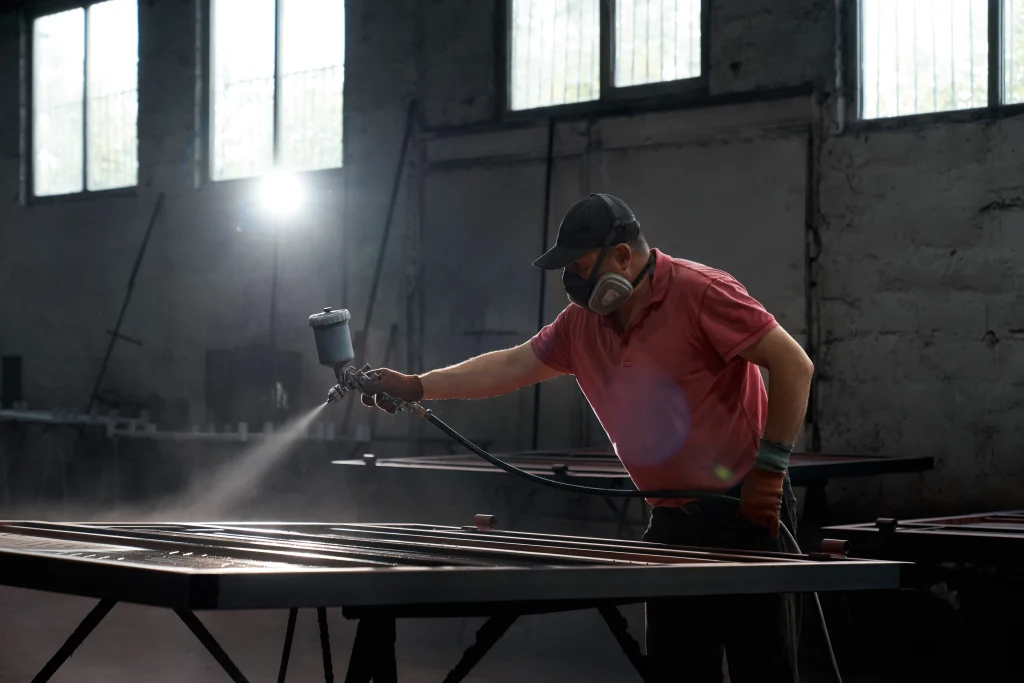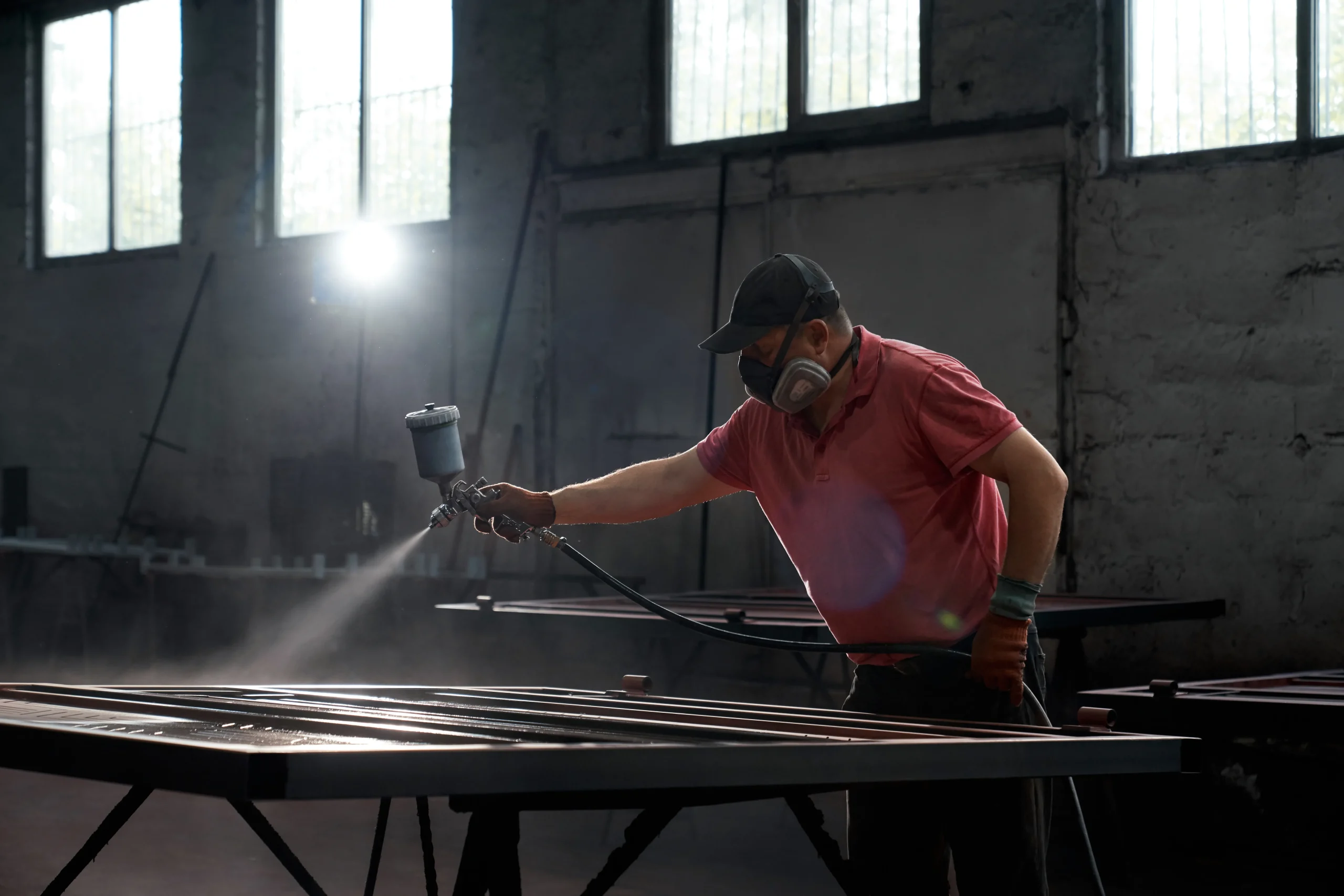
Certified grit blasting by Hulls Engineering delivers superior steel preparation in Melbourne, meeting top standards for safety, strength and performance.
Grit blasting is one of our specialised services at Hulls Engineering for preparing construction-grade steel to meet the highest durability and performance standards. We deliver precision and reliability across Australia’s engineering and fabrication sector. Our certified processes ensure quality, safety, and compliance, enabling us to provide results our clients can trust for their most demanding projects.
Grit Blasting for Construction-Grade Steel: Why It Matters
We apply grit blasting as a controlled surface preparation method, propelling abrasive particles at high velocity to remove rust, scale, and surface contaminants. This process creates an ideal profile for coatings to bond effectively. Unlike sandblasting or shot blasting, steel surface blasting offers a more uniform finish and can be tailored to suit specific coating requirements, giving us precise control over the outcome.
Our work ensures coatings achieve the adhesion strength and corrosion resistance necessary for construction-grade steel. By selecting this method, our clients benefit from a surface finish that helps their structures withstand Australia’s harsh environmental conditions and maintain safety standards over time.
Meeting Industry Standards – Certified Abrasive Blasting Processes
We operate in full compliance with Australian and international standards, including AS/NZS 1627 for metal surface preparation. Our certification confirms that every stage of our steel surface blasting process meets rigorous industry benchmarks, from selecting the right abrasive material to final inspection.
Our team combines technical expertise with advanced abrasive blasting plant technology. We control every variable, including blast pressure, nozzle angle, and abrasive flow, to ensure steel is prepared to the exact specification. Our procedures are fully documented, providing our clients with verifiable proof of quality and compliance.
Benefits of Certified Abrasive Blasting for Large-Scale Construction Projects
• Enhanced Durability: Our grit blasting services protect steel against corrosion and environmental wear, extending the service life of structures and components.
• Improved Coating Performance: By achieving the correct surface roughness, we help paints, primers, and protective coatings adhere more effectively, improving their performance and longevity.
• Structural Integrity: We ensure that treated steel maintains its load-bearing capacity and meets strict safety requirements.
• Cost Efficiency: Our preparation reduces the risk of premature coating failure, lowering long-term maintenance and replacement costs.
Applications in the Construction and Infrastructure Sector
We provide certified surface preparation services for a wide range of projects, including:
• Bridges, Tunnels, and Transport Infrastructure: Preparing steel to endure constant stress, weather, and high-traffic use.
• High-Rise Building Frameworks: Treating structural steel for commercial and residential towers.
• Marine and Port Structures: Applying abrasive blasting to combat saltwater corrosion on wharves, jetties, and offshore platforms.
• Heavy Industrial Facilities and Mining Equipment: Preparing large-scale machinery and plant components for challenging operational environments.
Hulls Engineering Australia – Excellence in Certified Steel Surface Blasting
At Hulls Engineering, our comprehensive services ensure construction-grade steel is prepared, fabricated, and finished to the highest standards. From advanced abrasive blasting and precision coating to expert fabrication and welding, we deliver solutions that enhance durability, performance, and compliance. Major corporations trust our team for reliable results backed by strict quality controls and decades of industry experience.
Contact us at Hulls Engineering to secure expert, certified grit blasting for your next project.
Related Blog Article: Grit-Blasting Services: Hulls Engineering’s 2025 Guide to Enhancing Metal Surface Quality


